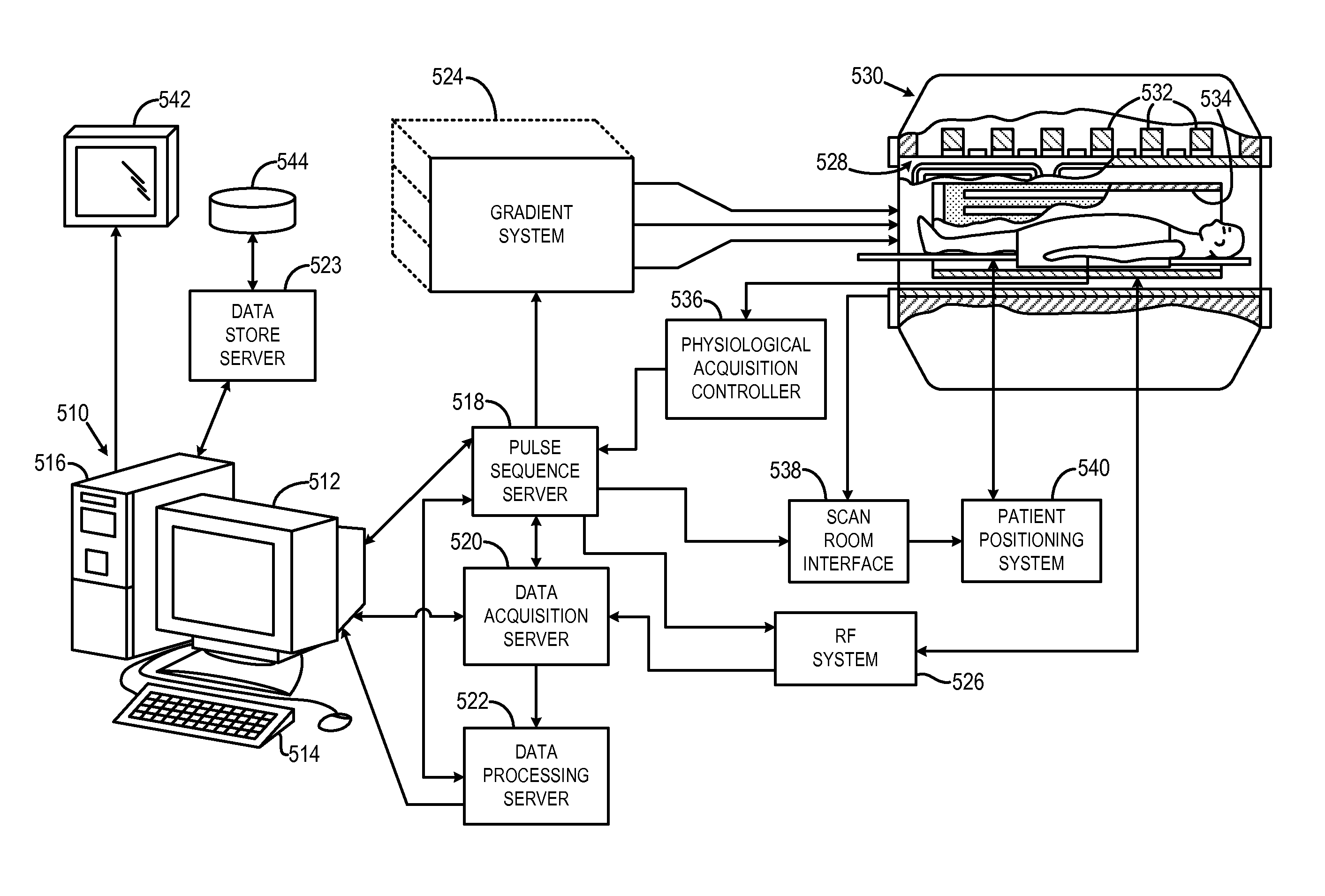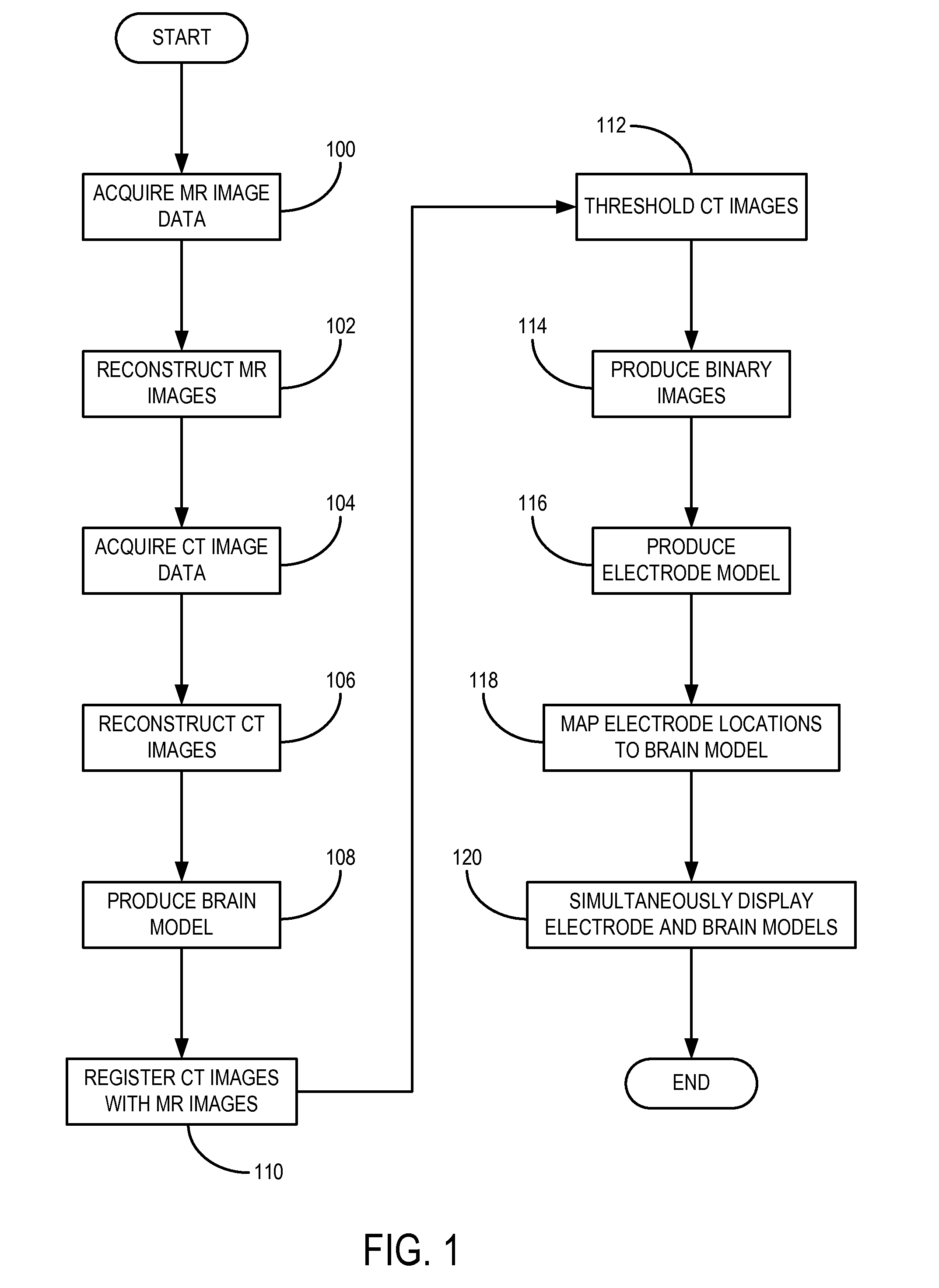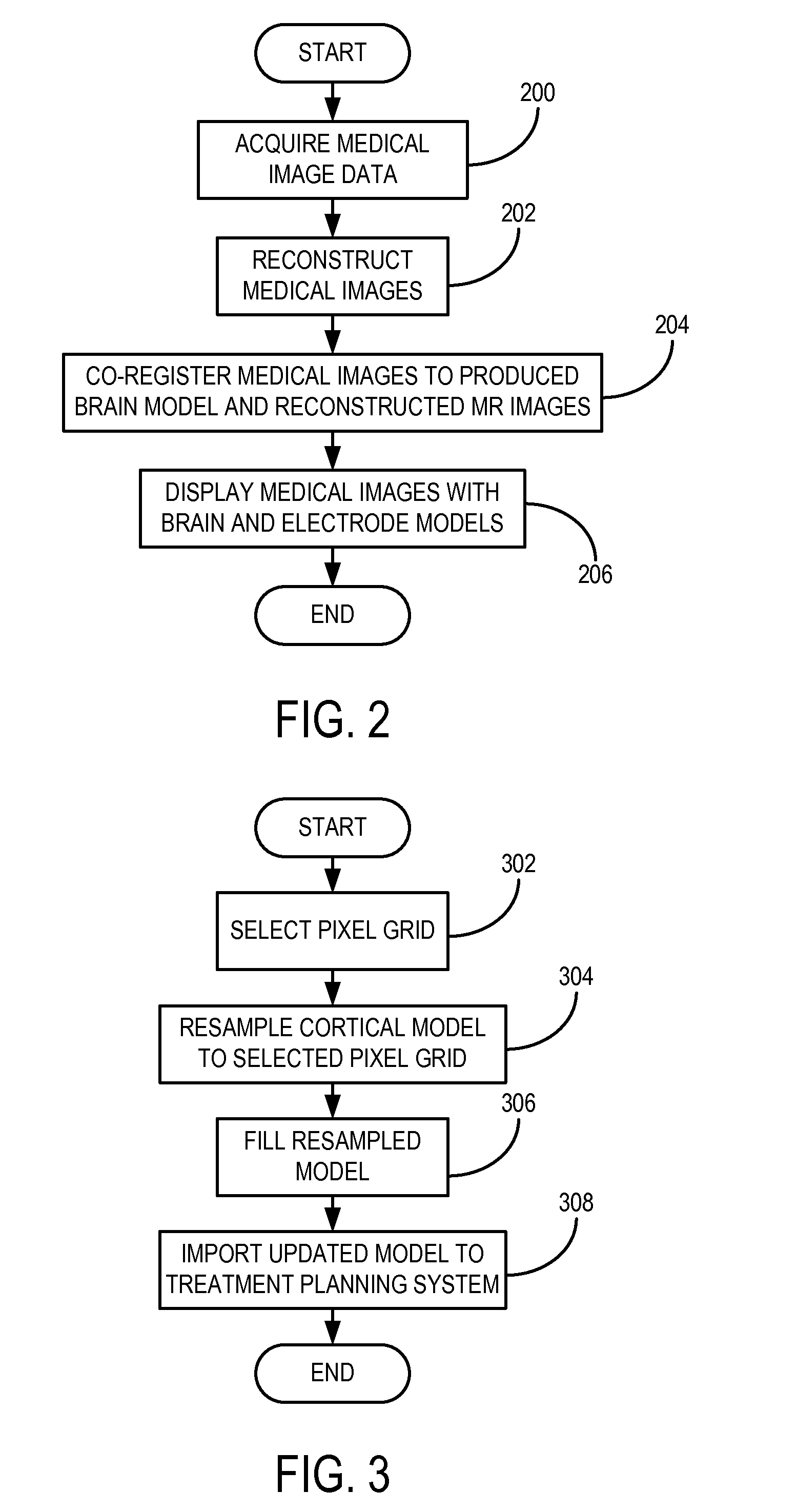Method for Determining Locations of Implanted Electrodes with Medical Images
a technology of medical images and electrodes, applied in the field of medical imaging systems and methods, can solve the problems of difficult planning of surgical margins for resection of epileptic zones, inaccurate cerebral models when ray tracing is implemented, and lack of degree of accuracy and/or resolution in imaging detail
- Summary
- Abstract
- Description
- Claims
- Application Information
AI Technical Summary
Benefits of technology
Problems solved by technology
Method used
Image
Examples
Embodiment Construction
[0024]Surgical resection of cortical areas that initiate seizures can be an effective treatment option for patients with, for example, drug-resistant partial epilepsy. Intracranial electroencephalography (“iEEG”) studies are often necessary for localizing seizure onset zones. These multichannel EEG tracings are traditionally analyzed visually to identify surgical targets. To acquire these tracing, subdural, or intracranial, electrodes are surgically implanted in the subject's brain. Exemplary electrodes include platinum-iridium alloy electrode discs (Ad-Tech Medical, Racine, Wis.) having a diameter, for example, of 4 millimeters (“mm”). Such exemplary electrodes are arranged in any number of particular arrangements, including, for example, a grid (e.g., 8×8), a partial grid (e.g., 8×2), and a strip (e.g., 4×1, 6×1, and 8×1). It should be appreciated by those skilled in the art that combinations of each of the preceding electrode arrangements are possible. Burr hole, or “trephine,” c...
PUM
 Login to View More
Login to View More Abstract
Description
Claims
Application Information
 Login to View More
Login to View More - R&D
- Intellectual Property
- Life Sciences
- Materials
- Tech Scout
- Unparalleled Data Quality
- Higher Quality Content
- 60% Fewer Hallucinations
Browse by: Latest US Patents, China's latest patents, Technical Efficacy Thesaurus, Application Domain, Technology Topic, Popular Technical Reports.
© 2025 PatSnap. All rights reserved.Legal|Privacy policy|Modern Slavery Act Transparency Statement|Sitemap|About US| Contact US: help@patsnap.com



